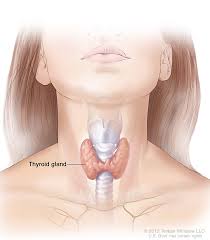Vitamin D

As Spring hits and such a lovely one in Sydney this year I am excited to spend time in the sun.
As I think back (way back) to my early years, growing up without the awareness of sunscreen or the looming spectre of sun-related hazards, I recall a time when sunscreen was a foreign concept in my household.
In fact, like a lot of Generation X’s and above, we used oils to speed up our tanning!
WHAT, I can feel all the Millennials and Gen Z’s gasping in horror!
Although Australia is known for its beach and outside lifestyle the fear of skin cancer has swung the pendulum to the point that most people do not dare walk outside unless covered head to toe with sunscreen. It is estimated that 95% of Australians are deficient in Vitamin D.
As a naturopath, I now find myself uniquely positioned place to reflect on my past and explore the intricate interplay between sunlight and our health. My journey has led me to appreciate the importance of finding a balance between the sun’s gifts and its potential hazards.
I invite you to join me as we delve into the complexities of sunlight and vitamin D, from the perspective of someone who once danced under the sun’s rays without a care in the world. Together, we’ll uncover the wisdom of nurturing our bodies with the natural gift of vitamin D while respecting the newfound awareness of the perils of excessive exposure.
The Sunshine Vitamin
Vitamin D, often referred to as the “sunshine vitamin,” is a fat-soluble nutrient that plays a pivotal role in maintaining overall health and well-being. One of its primary functions is the regulation of calcium and phosphorus absorption in the body, making it essential for healthy bones and teeth. Adequate vitamin D levels are crucial during childhood and adolescence when bone growth and development are at their peak, but they remain important throughout life to prevent conditions like osteoporosis and fractures.
Beyond its role in bone health, vitamin D has a profound impact on the immune system. It helps support a strong and balanced immune response, which is vital for defending the body against infections and diseases. Emerging research also suggests that vitamin D may play a role in reducing the risk of chronic illnesses such as cardiovascular disease, certain cancers, and autoimmune disorders.
Moreover, vitamin D is associated with mood and mental well-being. Low levels of vitamin D have been linked to an increased risk of mood disorders like depression and seasonal affective disorder (SAD). Exposure to sunlight, which stimulates vitamin D synthesis in the skin, is known to have mood-lifting effects, further highlighting the vitamin’s importance in mental health. To reap these health benefits, it’s essential to maintain adequate vitamin D levels through a combination of sensible sun exposure, dietary sources, and supplements when necessary, particularly for individuals with limited sun exposure or specific medical conditions.
While vitamin D is essential for various aspects of health, including immune function, it does not act as a protective shield against skin cancer caused by excessive sun exposure or other risk factors.
In fact, excessive sun exposure, especially without proper protection, is a significant risk factor for developing skin cancer, including melanoma and non-melanoma skin cancers. Sunburn and prolonged exposure to UV radiation from the sun or tanning beds can damage the DNA in skin cells, increasing the likelihood of cancerous changes and the development of skin cancer over time.
While maintaining adequate vitamin D levels is important for overall health, especially for bone health and immune function, it should not be used as a reason to expose oneself to excessive sunlight without protection. The key is to strike a balance by practising safe sun habits, such as using sunscreen, wearing protective clothing, and seeking shade during peak sun hours, to reduce the risk of skin cancer while ensuring you meet your vitamin D needs through a combination of sensible sun exposure, dietary sources, and supplements when necessary.
In Australia, the significance of vitamin D takes on a unique dimension, especially during the spring and summer months. These seasons offer an abundance of opportunities for natural vitamin D production through sunlight exposure. The sun’s UVB rays interact with our skin to synthesize this vital nutrient, making it an accessible and cost-free source of well-being for those who know how to strike the right balance between sun and skin.
However, harnessing the benefits of sunlight while avoiding its potential hazards is a delicate art that underscores the importance of understanding the relationship between sunlight and vitamin D.
How do we use sunlight to make Vitamin D?
The human body has a remarkable ability to synthesize vitamin D when exposed to sunlight, a process that takes place predominantly in the skin. This fascinating natural production begins with the interaction between the skin and specific ultraviolet (UV) rays from sunlight. There are two primary types of UV rays that reach the Earth’s surface: UVA and UVB. However, it’s the UVB rays that are of paramount importance for vitamin D synthesis.
When UVB rays from the sun strike the skin, a precursor molecule called 7-dehydrocholesterol, which is naturally present in the skin’s upper layers, undergoes a remarkable transformation. The energy from UVB radiation triggers the conversion of 7-dehydrocholesterol into cholecalciferol, commonly known as vitamin D3. This newly formed vitamin D3 then enters the bloodstream, where it undergoes further processing in the liver and kidneys to become its active form, calcitriol. Calcitriol is what the body utilizes to regulate calcium absorption, support bone health, modulate the immune system, and contribute to a wide array of essential physiological functions.
For optimal vitamin D synthesis to occur, several factors come into play. The process is most effective when the skin is exposed to direct sunlight containing UVB rays. The optimal wavelengths for vitamin D synthesis typically fall in the range of 290 to 315 nanometers. Additionally, the angle of the sun in the sky plays a role, with midday sun exposure being more effective than early morning or late afternoon. It’s worth noting that the duration of sun exposure needed varies depending on factors like skin tone, geographical location, time of year, and the amount of skin exposed. Achieving a balance between reaping the benefits of vitamin D production and safeguarding against sunburn and skin damage is essential, highlighting the importance of sun exposure moderation and sun safety practices.
How much time in the sun for optimal vitamin D?
Australia’s vast and diverse landscape presents unique geographical and climatic factors that influence vitamin D synthesis.
Due to its location in the southern hemisphere, Australia experiences more intense UV radiation levels, especially during its long, sun-soaked summers.
However, these levels can vary significantly from north to south and east to west. In the northern regions, such as Queensland and the Northern Territory, sun exposure can be sufficient for vitamin D synthesis throughout the year, thanks to the consistently warm climate and ample sunshine. In contrast, southern regions, like Victoria and Tasmania, may experience lower UV radiation levels during the winter months, potentially leading to lower vitamin D production.
For safe sun exposure in Australia during spring and summer, it’s important to strike a balance between reaping the benefits of vitamin D synthesis and minimizing the risk of sunburn and skin damage. The amount of time is actually quite short. Ideally, aim for short periods of sun exposure between 10 am and 3 pm when UVB radiation is at its peak. The duration of exposure required varies depending on factors such as skin type, age, and location.
People with fair skin may need as little as 10-15 minutes of sun exposure on their arms and face, while those with darker skin may require longer. It’s essential to monitor your skin for any signs of redness or burning and seek shade or use protective clothing and sunscreen as needed.
Individuals residing in regions with less sunlight during certain times of the year should pay extra attention to their vitamin D intake from dietary sources or supplements.
While sunlight remains the primary natural source of vitamin D for our bodies, it’s worth noting that this essential nutrient can also be obtained from select dietary sources. Fatty fish, such as salmon, mackerel, and trout, are excellent natural providers of vitamin D. Additionally, eggs and some fortified foods like milk, orange juice, and cereals can contribute to your vitamin D intake.
However, for many individuals, especially those with limited sun exposure, dietary sources alone may not suffice to maintain adequate vitamin D levels. In such cases, vitamin D supplements can play a crucial role in bridging the gap. Supplements can be particularly important during periods when sunlight exposure is minimal, such as in the winter months or for individuals who have medical conditions that interfere with vitamin D absorption.
At Naturally with Leah we can recommend a variety of supplements based on your specific needs.

